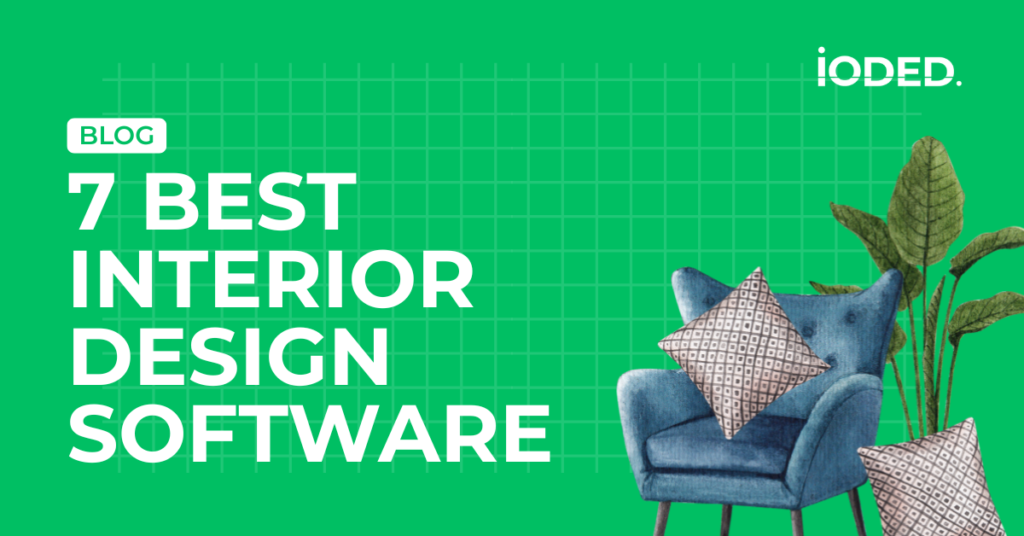Top Interior Design Software Every Beginner Should Try (No CAD Needed)

If you’ve ever wanted to design a room, visualize furniture arrangements, or plan your dream space—interior design software is the tool for you.
But here’s the problem:
Most interior design tools are heavy, complex, or require CAD knowledge, which makes them intimidating for beginners.
That’s why in this blog, we’re focusing on simple, beginner-friendly interior design software you can start using right away—without needing to learn CAD.
We’ll break down each tool, who it’s for, what you can do with it, and how to get started—even if you’re completely new.
Why Interior Design Software Matters for Beginners
Interior design used to require years of experience, technical drawing, or professional software. But not anymore.
With modern software, even beginners can:
- Plan a bedroom, kitchen, or full house
- Experiment with colors, textures, and lighting
- Visualize furniture layouts in 3D
- Share ideas with clients or friends
And you don’t need CAD or engineering knowledge to begin.
Let’s explore the top beginner-friendly tools available right now.
1. SketchUp Free
Best for: Beginners who want to learn 3D layout design
Platform: Web-based
Price: Free (with Pro version available)
What makes it beginner-friendly:
SketchUp Free offers a simplified 3D modeling experience with an intuitive interface. You can design rooms, furniture layouts, and even exteriors.
It’s drag-and-drop, runs in your browser, and doesn’t require installation or CAD knowledge.
Practical Use:
Design a sample living room and play with dimensions, wall color, and furniture placement.
2. Planner 5D
Best for: Home planners, hobbyists, and students
Platform: Web, iOS, Android
Price: Free with in-app purchases
What makes it beginner-friendly:
Planner 5D lets you design in 2D and 3D with simple tools. The UI is friendly, and there’s no steep learning curve.
You can choose from a large furniture library, switch between views, and create photorealistic renders.
Practical Use:
Create a realistic apartment layout or bedroom makeover and render it for your portfolio.
3. Roomstyler 3D Home Planner
Best for: Total beginners who want quick results
Platform: Web-based
Price: Free
What makes it beginner-friendly:
No software installation needed. Just drag furniture into a room and see the changes instantly in 3D.
Roomstyler is ideal for students or creatives who want to visualize ideas quickly and easily without learning software logic.
Practical Use:
Use it to redesign your current room or plan a friend’s space and export a high-quality render.
4. Homestyler
Best for: Interior design students building a portfolio
Platform: Web, iOS, Android
Price: Free basic version; paid upgrades
What makes it beginner-friendly:
Homestyler offers a large catalog of real-world furniture from brands and lets you place them in a realistic 3D space.
You can rotate, scale, and experiment with layouts. It also has templates for living rooms, kitchens, and bedrooms.
Practical Use:
Create multiple layouts and test which design fits the best flow or aesthetic. Great for showcasing your design thinking.
5. IKEA Home Planner
Best for: Budget-conscious interior lovers
Platform: Web
Price: Free
What makes it beginner-friendly:
IKEA’s Home Planner is perfect for people who want to design with real products. You can use actual IKEA items, set your room dimensions, and build your space.
Practical Use:
Create a realistic room setup using furniture that’s actually available in the market.
6. Sweet Home 3D
Best for: Students and DIY designers who want control
Platform: Desktop app (Windows, Mac, Linux)
Price: Free
What makes it beginner-friendly:
Sweet Home 3D allows 2D floor planning with a real-time 3D preview. It’s open-source, so it’s completely free to use and well-documented.
It’s slightly more technical than Planner 5D or Roomstyler but still much easier than AutoCAD.
Practical Use:
Design an entire floor plan with window placement, lighting effects, and walk-throughs.
7. Floorplanner
Best for: Beginners focused on layouts
Platform: Web
Price: Free (1 project) with upgrade options
What makes it beginner-friendly:
Floorplanner offers quick, drag-and-drop functionality with powerful rendering capabilities. It’s ideal for practicing real estate-style floor plan creation and basic interior layout.
Practical Use:
Create house plans for friends, clients, or side projects and present them visually using Floorplanner’s 3D views.
How to Choose the Right Interior Design Software as a Beginner
Not all tools are created equal. Here’s how to pick the best one for your needs:
| Your Goal | Recommended Tool |
| Quick room setup | Roomstyler, Homestyler |
| Create real-looking designs | Planner 5D, Sweet Home 3D |
| Layout-based work | Floorplanner, IKEA Planner |
| Learn basic 3D design | SketchUp Free |
| Build a portfolio | Homestyler, Planner 5D |
Tips for Practicing Without Clients
You don’t need real clients to get better. Try these ideas:
- Redesign your own bedroom or apartment
- Recreate a room from Pinterest or Instagram
- Offer free designs to friends or family
- Participate in Reddit or Facebook design challenges
- Build a mini portfolio on Behance or Canva
Learn Practically with IODED
At IODED, we teach practical design and marketing skills. Whether you’re learning interior design, digital marketing, or visualization tools, we help you:
- Work on real projects
- Use beginner-friendly software
- Build a creative portfolio
- Get feedback from mentors
Our Live Digital Marketing Course also helps students from all creative backgrounds—design, architecture, and visual arts—build their own brand and attract freelance clients.
Final Thoughts
You don’t need to master AutoCAD to begin your interior design journey. Tools like Planner 5D, Homestyler, and Roomstyler make it simple to start, explore, and create your dream spaces with zero prior experience.
What matters is that you start practicing, experiment with layouts, and keep learning through projects.